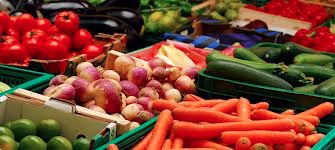OrdinaryTimes 1.36-Provisioning

A decent veg stock gets built in three stages. The first stage, I raw cut. Carrots, parsnips, celery root and fennel top; beet, chard, and kale stems; shallots and okra tops, hot roasted for more than an hour, less than two, after being baptized in a decent olive oil and sprinkled with sea salt. I want these guys on the edge of char because char compensates for the anemic color and texture of plain boiled veg.
The second stage empties the freezer. Every bit of leftover peeling and pith I’ve frozen there gets added to the BIG stock pot. I’m filtering water as fast as I can while I peel a butt-load of carrots and parsnips and celery root. I throw those peels and their butt ends into the pot, too. I throw into the pot a star anise or three, more dried seaweed than I think prudent, licorice root , and a cinnamon stick. Also a bay leaf. I slink out into the garden and cut a large handful of fresh oregano, thyme, and sage. I wash these and throw them in, too.
Once the rough cut veg has almost chared, I nudge that mess into the stock pot for the boil. The cookbooks insist that I must carefully ladle off the foam, but I do not. That foam is flavor. I torture the roasted veg. I want it to be done for before I drain it off and add the final ingredients.
I taste it then, noting the building depth, anticipating what the final stage will bring.
While the first rough cut veg boils, I’m hot roasting fine-cut veg. Carrot, parsnip, celery root, and added in the last fifteen minutes, a large bowl of okra, fine cut. I though about adding some cabbage, but decided against it. That second roast lasts an hour or more, the veg has fully caramelized. The roasting pan has sticky brown spots, and it’s time to drain off the first boil. The result looks thin, but hold a promising light amber color.
I throw away all those base, boiled-out vegetables and move on. To the light amber stock, I add the caramelized fine-cut stuff, which boils spontaneously when added to the liquid. I set this mess to simmer while I pour the rest of that fine leftover Portuguese red into the roasting pan, hoping to coax the burned bits off the bottom. This yields a darker brown liquid, which I toss into the stock pot. It’s starting to look like food now.
I chop the beet greens, chard greens, and the feral kale greens, then add them to the pot, too, which is simmering self-satisfyingly now. I invite tastes and it passes muster.
I’ve spent the last two days frantically trolling for depth. I even bought some burdock root, which I added to the final roast, hoping I could pull off a stock worthy of even the most anemic palate. I might have succeeded.
There is no recipe for any of this. It depends upon chance encounters and a fussing attitude. I do not understand the vegetarian psyche, but I know a thing or two about texture and taste. I can even manage to fool myself most of the time.
I care about this. If my guest can’t tolerate eggplant or is allergic to basil, I will find a workable work-around. There is no excuse for failing to satisfy any palate. I feel properly prepped for anything now.
©2013 by David A. Schmaltz - all rights reserved


